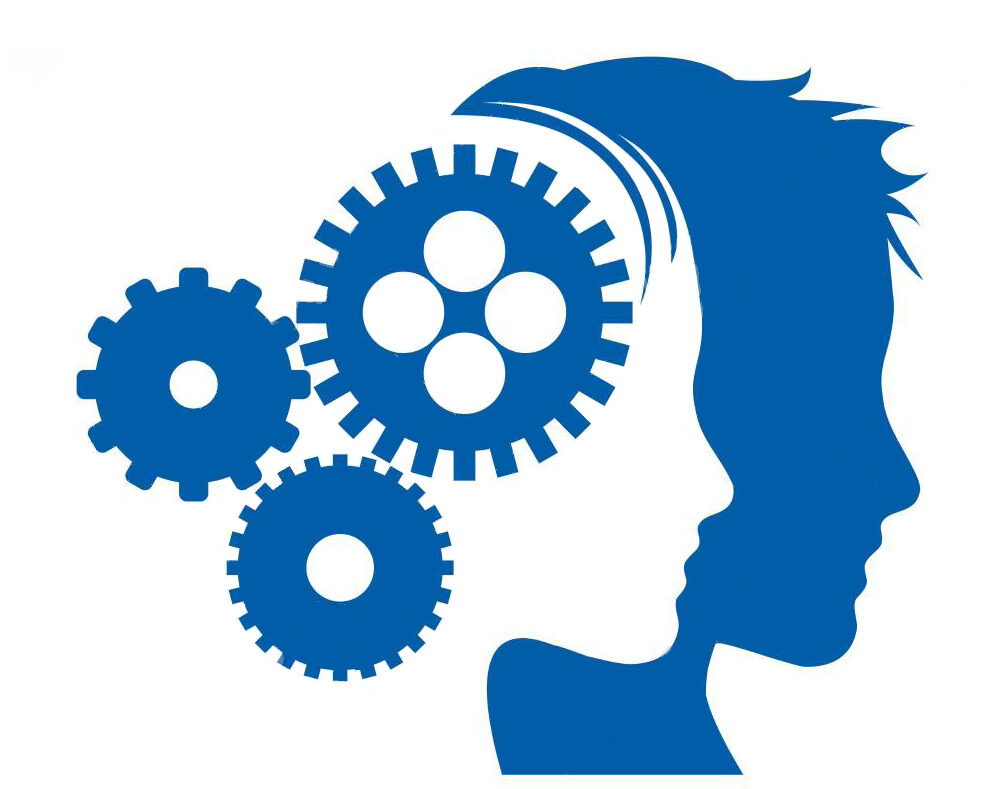Have you ever stopped to consider that the reality you experience is a direct reflection of what is happening within you? It’s a simple yet profound lesson that we seem to forget time and time again. Despite countless reminders, we continue to overlook the impact of our thoughts, beliefs, and emotions on our external circumstances. So, how many times do we need to learn this lesson before it truly sinks in? Let’s explore this concept further and uncover the power we hold to shape our reality.

The Importance of Self-Reflection
Understanding the Power of Self-Reflection
Self-reflection is a powerful tool that allows you to gain deeper insight into yourself, your thoughts, and your actions. It is the act of taking a step back, introspecting, and examining your own beliefs, behaviors, and patterns. By engaging in self-reflection regularly, you can better understand your motivations, strengths, weaknesses, and areas for growth. It gives you the opportunity to assess your actions and make adjustments as needed, leading to personal and professional growth.
Why Self-Reflection is Essential for Personal and Professional Growth
Self-reflection is essential for personal and professional growth because it provides the necessary foundation for self-awareness and self-improvement. By taking the time to reflect on your experiences, you can identify areas where you excel and areas where you need to make improvements. This self-knowledge allows you to set realistic goals, make informed decisions, and develop strategies for personal and professional success. Without self-reflection, you may find yourself on autopilot, repeating the same patterns and making the same mistakes without truly understanding why.
The Connection Between Self-Reflection and Understanding Reality
Self-reflection plays a crucial role in understanding reality because it helps you recognize that reality is a reflection of your internal state. As the saying goes, “reality is a mirror of what’s going inside of you.” By engaging in self-reflection, you can uncover hidden beliefs, biases, and emotions that shape your perception of reality. This understanding allows you to take responsibility for your thoughts, feelings, and actions, and empowers you to make positive changes to align your external reality with your internal desires.
How Self-Reflection Helps in Making Better Decisions
Self-reflection is a valuable tool in making better decisions because it allows you to gain clarity and perspective. When faced with a decision, taking the time to reflect on your values, goals, and priorities can help you make choices that align with your true self. Furthermore, self-reflection helps you become aware of any biases, fears, or limiting beliefs that may be influencing your decision-making process. By recognizing and addressing these factors, you can make more objective and empowered decisions that lead to positive outcomes.
Using Self-Reflection to Improve Relationships
Self-reflection is not only beneficial for personal growth but also for improving relationships. By reflecting on your own thoughts, feelings, and behaviors, you can gain insight into the impact they have on your interactions with others. This awareness allows you to be more empathetic, understanding, and respectful towards others’ perspectives. Additionally, self-reflection enables you to identify and address any patterns of behavior that may be causing harm or hindering the quality of your relationships. By cultivating self-awareness through self-reflection, you can build stronger connections and foster healthier relationships.
The Role of Self-Awareness
Developing Self-Awareness: Recognizing Your Thoughts, Feelings, and Actions
Self-awareness is the foundation of personal growth and development. It involves paying attention to your thoughts, feelings, and actions in a non-judgmental manner. Developing self-awareness requires you to be present and attentive to your internal experiences, allowing you to understand why you react and behave in certain ways. By recognizing your thoughts, feelings, and actions, you can gain a deeper understanding of yourself and take intentional steps towards personal growth.
The Link Between Self-Awareness and Perception
Self-awareness is closely linked to perception as it influences how you interpret and understand the world around you. By being self-aware, you can identify any biases, assumptions, or limiting beliefs that may be distorting your perception of reality. This awareness allows you to view situations and interactions from a more objective standpoint, enabling you to make more informed and thoughtful decisions.
Understanding Your Emotional Triggers
Emotional triggers are events or situations that elicit strong emotional responses within you. Developing self-awareness allows you to recognize and understand your emotional triggers. By identifying these triggers, you can take steps to manage and respond to them in healthier ways. When you are aware of your emotional triggers, you can make conscious choices about how you want to react and prevent yourself from acting impulsively or inappropriately.
The Impact of Self-Awareness on Personal Development
Self-awareness is a crucial aspect of personal development because it allows you to identify areas for growth and take proactive steps towards self-improvement. By being aware of your strengths and weaknesses, you can focus on enhancing your strengths while actively working on areas that need improvement. Self-awareness also helps you identify and challenge any self-limiting beliefs or negative self-perceptions that may be holding you back from reaching your full potential.
The Influence of Self-Awareness on Attaining Emotional Intelligence
Emotional intelligence refers to the ability to recognize and manage one’s own emotions, as well as understand and empathize with the emotions of others. Self-awareness is a key component of emotional intelligence as it enables you to understand and regulate your own emotions effectively. By developing self-awareness, you can better navigate interpersonal relationships, empathize with others’ experiences, and respond to emotions in a compassionate and constructive manner.
Recognizing Patterns and Behaviors
Identifying Patterns in Thoughts, Emotions, and Behaviors
Recognizing patterns in your thoughts, emotions, and behaviors is an essential step towards self-improvement. By examining recurring patterns, you can gain insight into the underlying beliefs, motivations, and triggers that drive your actions. Identifying these patterns allows you to develop strategies for breaking negative habits, fostering positive change, and aligning your behavior with your desired outcomes.
The Role of Patterns in Shaping Perception
Patterns play a significant role in shaping perception as they influence how you interpret and respond to various stimuli. For example, if you have a pattern of negative self-talk, you may be more prone to interpreting situations in a negative or critical manner. By recognizing these patterns, you can challenge and reframe your perceptions, opening yourself up to more positive and empowering interpretations.
How Awareness of Patterns Can Help in Changing Negative Habits
Awareness of patterns is a powerful tool in changing negative habits. By identifying the cues, triggers, and rewards associated with certain behaviors, you can start to disrupt the automatic nature of these habits. Through self-reflection and self-awareness, you can develop alternative strategies and replace negative habits with more positive ones. Over time, this awareness and intentional practice can lead to lasting behavioral change.
Recognizing Programming and Conditioning
Throughout our lives, we are exposed to various forms of programming and conditioning that shape our beliefs, values, and behaviors. These external influences can have a significant impact on our perception of reality and the choices we make. By engaging in self-reflection, you can become aware of the programming and conditioning you have received and examine whether these beliefs and behaviors align with your authentic self. This recognition empowers you to challenge and change any limiting or harmful programming that no longer serves you.
Breaking Free from Limiting Patterns and Behaviors
Breaking free from limiting patterns and behaviors requires a combination of self-reflection, self-awareness, and intentional action. By recognizing and understanding the patterns that hold you back, you can consciously choose to break free from them. This process may involve seeking support from others, adopting new perspectives, and implementing strategies for change. Through consistent effort and self-reflection, you can liberate yourself from limiting patterns and behaviors and embrace a more empowered and fulfilling life.
Taking Responsibility for Your Reality
Understanding the Role of Personal Responsibility
Personal responsibility is the acknowledgment and acceptance of the role you play in creating your own reality. It involves recognizing that you have control over your thoughts, actions, and reactions, and that you are responsible for the outcomes they bring. By taking responsibility for your reality, you empower yourself to make conscious choices and take intentional action towards creating the life you desire.
The Power of Mindset in Shaping Reality
Mindset plays a crucial role in shaping your reality. It refers to your beliefs, attitudes, and assumptions about yourself and the world around you. A positive and growth-oriented mindset allows you to see challenges as opportunities for growth and view setbacks as temporary setbacks rather than permanent failures. By cultivating a positive and empowering mindset, you can shift your perspective and create a more positive and fulfilling reality.
Recognizing and Accepting Your Role in Creating Your Circumstances
Recognizing and accepting your role in creating your circumstances is a key aspect of personal responsibility. It means acknowledging that the choices you make, the actions you take, and the attitudes you adopt all contribute to the outcomes you experience. By embracing this responsibility, you can shift from a victim mentality to an empowered mindset, taking control of your life and actively shaping your circumstances.
Learning from Mistakes: Turning Challenges into Opportunities
Mistakes and challenges are inevitable aspects of life, but they also provide valuable opportunities for growth and learning. Taking responsibility for your reality involves embracing these experiences as learning opportunities rather than dwelling on them as failures. By reflecting on your mistakes and challenges, you can extract valuable insights and make adjustments to improve yourself and your circumstances. This growth mindset allows you to transform setbacks into stepping stones towards success.
Taking Control of Your Actions and Reactions
Taking responsibility for your reality entails taking control of your actions and reactions. It means consciously choosing how you respond to the circumstances and events in your life. Instead of reacting impulsively or being driven by external factors, you can pause, reflect, and respond in a way that aligns with your values and goals. By taking control of your actions and reactions, you regain power over your reality and can create outcomes that are in line with your aspirations.

The Role of Beliefs and Perception
Examining the Influence of Beliefs on Perception
Beliefs play a significant role in shaping perception as they act as filters through which we interpret and make sense of the world. Our beliefs can affect how we perceive ourselves, others, and the events around us. By examining our beliefs, we can become aware of any biases or distortions that may be coloring our perception and preventing us from seeing reality as it truly is.
Identifying Limiting Beliefs and Their Impact on Reality
Limiting beliefs are deeply ingrained, negative beliefs that restrict our potential and hinder personal growth. These beliefs often stem from past experiences, societal conditioning, or self-imposed limitations. By identifying limiting beliefs, we can uncover the ways in which they shape our reality, reinforce self-doubt, and hinder our progress. Once recognized, these limiting beliefs can be challenged and replaced with empowering beliefs that support personal growth and achievement.
How to Challenge and Change Limiting Beliefs
Challenging and changing limiting beliefs requires conscious effort and self-reflection. By questioning the validity and accuracy of these beliefs, we can begin to challenge their hold over us. Seeking contrary evidence, examining alternative perspectives, and challenging the underlying assumptions can help weaken the grip of limiting beliefs. Furthermore, consciously adopting empowering beliefs that support our desired reality can help counteract the negative impact of limiting beliefs.
Developing Empowering Beliefs for Positive Change
Empowering beliefs are positive, self-affirming beliefs that support personal growth and success. By developing empowering beliefs, we can shift our perception and create a more positive and empowering reality. Cultivating beliefs such as “I am capable of achieving my goals” or “I deserve happiness and success” can support resilience, motivation, and a proactive mindset. By consciously nurturing empowering beliefs, we can align our perception with our desired outcomes and create a more fulfilling and enriching life.
The Shift in Perception: Changing Your Lens on Reality
The beliefs and perceptions we hold shape our reality. By consciously examining and challenging our beliefs, we can shift our perception and change the lens through which we view the world. This shift in perception opens up new possibilities, expands our potential, and allows us to see opportunities that were previously unseen. By actively choosing to view reality through a positive and empowering lens, we can create a more joyful, meaningful, and fulfilling life.
The Power of Intention and Visualization
Understanding the Role of Intention in Manifesting Reality
Intention is the conscious and deliberate focus of your thoughts and energy towards a specific outcome. It involves setting clear and meaningful goals and directing your actions towards achieving them. By clarifying your intentions, you provide direction and purpose to your thoughts and actions, increasing the likelihood of manifesting your desired reality.
Using Visualization as a Tool for Creating Your Desired Reality
Visualization is a powerful technique that involves creating vivid mental images of your desired outcomes. By visualizing yourself achieving your goals, you activate the creative power of your mind and align your thoughts and energy with your aspirations. Visualization helps you build confidence, increase motivation, and reinforce a positive mindset. By regularly practicing visualization exercises, you can create a strong mental blueprint that guides your actions and helps manifest your desired reality.
Aligning Your Actions with Your Intentions
Intentions alone are not enough to manifest your desired reality; they must be supported by aligned actions. By aligning your actions with your intentions, you create congruence between your thoughts, words, and deeds. This alignment helps you make consistent progress towards your goals, reinforces your commitment to your intentions, and strengthens your belief in their attainment. By taking purposeful action that aligns with your intentions, you enhance the likelihood of manifesting your desired reality.
Cultivating a Positive Mindset through Visualization
Visualization not only helps you create your desired reality but also cultivates a positive mindset. By consistently visualizing positive outcomes, you condition your mind to focus on possibilities, amplify optimism, and counteract negative thought patterns. This positive mindset fosters resilience, creativity, and adaptability, allowing you to navigate challenges and setbacks with confidence and determination. By incorporating visualization into your daily routine, you can cultivate and strengthen a positive mindset.
Harnessing the Power of Visualization Techniques
Visualization techniques can vary in their approach and focus, allowing you to explore different methods that resonate with you. From guided visualizations to vision boards and affirmations, there are numerous techniques available to help you harness the power of visualization. Experiment with different techniques and find the ones that resonate with you, providing the most vivid and impactful experience. By consistently incorporating visualization techniques into your routine, you can tap into their transformative power and manifest your desired reality.

The Influence of External Experiences
Examining the Relationship Between Internal and External Experiences
The relationship between internal and external experiences is intertwined and constantly interacting. Internal experiences, such as thoughts, emotions, and beliefs, influence how we perceive and respond to external circumstances. Similarly, external experiences can shape our internal reality by triggering certain thoughts, emotions, and behaviors. Understanding this dynamic allows us to recognize the interconnectedness of our internal and external worlds and take proactive steps to shape our experiences.
How External Factors Can Influence Internal Reality
External factors, such as the environment, social interactions, and life events, can have a profound impact on our internal reality. These factors can shape our beliefs, attitudes, and emotions, influencing how we perceive ourselves and the world around us. By recognizing the influence of external factors, we can consciously choose to cultivate a supportive environment that nurtures our personal development and aligns with our values and goals.
Recognizing and Addressing External Triggers and Responses
External triggers are events, situations, or people that evoke strong emotional responses within us. By recognizing these triggers, we can better understand our reactions and patterns of behavior. Through self-reflection, we can identify any negative or unhelpful responses and develop strategies for managing and responding to external triggers in healthier ways. By consciously addressing our responses to external triggers, we can take control of our emotions and actions.
Shifting Focus from External Circumstances to Internal Responses
Shifting our focus from external circumstances to internal responses empowers us to take ownership of our experiences. Instead of allowing external circumstances to dictate our emotions and actions, we can choose how we respond. By cultivating awareness of our internal world and developing emotional intelligence, we can respond to external circumstances in ways that align with our values, aspirations, and desired reality.
Creating Internal Resilience in the Face of External Challenges
External challenges are inevitable aspects of life, but internal resilience allows us to navigate them with strength and grace. Developing internal resilience involves cultivating self-awareness, emotional intelligence, and a growth mindset. By applying self-reflection and self-care practices, we can enhance our ability to bounce back from setbacks, adapt to change, and thrive in the face of external challenges. Internal resilience enables us to maintain a sense of inner stability and optimism, even when external circumstances may be challenging.
The Role of Self-Compassion and Forgiveness
Understanding the Importance of Self-Compassion
Self-compassion is the practice of being kind, understanding, and supportive towards oneself, especially in the face of mistakes or failures. It involves treating oneself with the same care, empathy, and concern that one would extend to a dear friend. Self-compassion is essential because it allows us to acknowledge our imperfections and setbacks without harsh self-judgment. By cultivating self-compassion, we can foster self-acceptance, resilience, and emotional well-being.
Practicing Self-Forgiveness for Personal Growth
Self-forgiveness is the act of letting go of self-blame, regret, and resentment towards oneself. It involves accepting mistakes, acknowledging lessons learned, and allowing oneself to move forward with personal growth. Practicing self-forgiveness is crucial because it frees us from the burden of past experiences and enables us to focus on positive change and self-improvement. By forgiving ourselves, we open up space for personal growth, empowerment, and a positive mindset.
Letting Go of Past Experiences and Grudges
Letting go of past experiences and grudges is essential for personal liberation and growth. Holding onto resentment, anger, or regret towards ourselves or others hinders our ability to move forward and creates emotional baggage that weighs us down. By practicing self-reflection, self-compassion, and forgiveness, we can release the grip of the past and create space for healing, personal growth, and positive change.
Cultivating Self-Love and Acceptance
Cultivating self-love and acceptance is a transformative practice that fosters a deep sense of self-worth and fulfillment. It involves recognizing and appreciating our inherent value, embracing our strengths and weaknesses, and celebrating our uniqueness. By practicing self-love and acceptance, we enhance our self-esteem, resilience, and overall well-being. This practice enables us to show up authentically, pursue our passions, and create a life that aligns with our true selves.
The Transformational Power of Self-Compassion and Forgiveness
Self-compassion and forgiveness are transformational practices that have the power to heal emotional wounds, nurture personal growth, and foster positive relationships. By extending compassion and forgiveness to ourselves, we liberate ourselves from the burden of self-judgment, shame, and blame. This transformation enables us to embrace self-improvement, cultivate healthier relationships, and create a more compassionate and harmonious reality.

Cultivating a Growth Mindset
Recognizing the Difference Between Fixed and Growth Mindsets
A fixed mindset refers to the belief that abilities, intelligence, and talents are fixed traits that cannot be changed or developed. In contrast, a growth mindset is the belief that intelligence and abilities can be cultivated through effort, practice, and a willingness to learn. Recognizing the difference between fixed and growth mindsets is crucial because it determines our approach to challenges, setbacks, and personal growth. By cultivating a growth mindset, we embrace lifelong learning, view failures as opportunities for growth, and believe in our capacity for positive change.
Embracing Challenges and Learning from Failures
Embracing challenges and learning from failures is a core component of a growth mindset. Instead of avoiding challenges or fearing failure, individuals with a growth mindset see these experiences as valuable opportunities for learning and personal development. By embracing challenges, taking risks, and learning from failures, we develop resilience, creativity, and perseverance. This mindset allows us to push beyond our comfort zones, view setbacks as stepping stones to success, and continuously grow and improve.
The Role of Growth Mindset in Overcoming Obstacles
A growth mindset plays a crucial role in overcoming obstacles and setbacks. With a growth mindset, we approach obstacles as temporary challenges that can be overcome with effort, strategy, and perseverance. This mindset allows us to view setbacks as opportunities for learning and growth, maintaining motivation and focus even when faced with difficulties. By adopting a growth mindset, we become more resilient, adaptable, and open to the possibilities that arise from overcoming obstacles.
Developing Resilience and Persistence Through a Growth Mindset
Resilience and persistence are qualities that are cultivated through a growth mindset. By believing in our capacity for growth and learning, we are more likely to bounce back from setbacks and persevere in the face of challenges. A growth mindset allows us to reframe setbacks as temporary obstacles and view them as opportunities for learning and personal development. This perspective fuels our determination and increases our resilience, enabling us to navigate obstacles with grace and persistence.
Continual Learning and Improvement as a Core Tenet of Growth Mindset
Continual learning and improvement are at the core of a growth mindset. With a growth mindset, we embrace the idea that our abilities, talents, and intelligence can be developed through dedication, practice, and ongoing learning. This mindset encourages us to seek out new experiences, expand our knowledge and skills, and continuously challenge ourselves. By adopting a growth mindset, we foster a lifelong commitment to learning, improvement, and personal growth.
Building a Supportive Environment
Surrounding Yourself with Positive and Growth-Oriented Individuals
Surrounding yourself with positive and growth-oriented individuals is essential for personal development and well-being. The people we spend time with influence our mindset, attitudes, and behavior. By choosing to associate with individuals who are positive, supportive, and growth-minded, we are more likely to adopt similar qualities and beliefs. These individuals can provide encouragement, inspiration, and valuable insights that fuel our personal growth journey.
The Importance of Accountability Partners
Accountability partners play a crucial role in personal development by providing support, motivation, and guidance. An accountability partner is someone who holds you accountable for your goals, commitments, and actions. By sharing your aspirations and progress with an accountability partner, you create a sense of responsibility and commitment to your personal growth journey. This external support system can help keep you focused, motivated, and on track towards achieving your goals.
Creating a Supportive Network for Personal Development
Creating a supportive network for personal development involves cultivating relationships with individuals who share similar aspirations and values. By connecting with like-minded individuals, you can create a supportive ecosystem that fosters growth, learning, and collaboration. This network can provide opportunities for mentorship, collaboration, and sharing of resources and knowledge. By actively participating in a supportive network, you can accelerate your personal development journey and expand your opportunities for growth.
Seeking Guidance from Mentors and Coaches
Mentors and coaches play a vital role in guiding and supporting personal development. A mentor is someone who provides guidance, advice, and support based on their own experiences and expertise. A coach, on the other hand, is someone who helps you clarify your goals, develop strategies, and holds you accountable for your progress. By seeking guidance from mentors and coaches, you can gain valuable insights, receive constructive feedback, and accelerate your personal growth journey.
The Collective Influence: How Our Environment Shapes Reality
Our environment, including the physical spaces we inhabit and the people we surround ourselves with, has a profound influence on our perception and reality. By intentionally curating our environment to support our personal growth, we shape our reality to align with our aspirations and values. Creating a nurturing and supportive environment involves fostering positive relationships, surrounding ourselves with inspiring and growth-oriented individuals, and cultivating spaces that promote creativity, learning, and well-being.
In conclusion, self-reflection, self-awareness, and personal responsibility are essential aspects of personal and professional growth. By engaging in self-reflection, we gain deeper insights into ourselves and our patterns of behavior. Through self-awareness, we can recognize our thoughts, feelings, and actions, enabling us to navigate the world with greater clarity and intentionality. Taking responsibility for our reality empowers us to take control of our actions and reactions, shaping the outcomes we experience. By cultivating a growth mindset and building a supportive environment, we create opportunities for continuous learning and improvement. Through self-compassion, forgiveness, and a positive mindset, we foster emotional well-being and resilience. By embracing these principles and practices, we can unlock our full potential and create a reality that reflects our true selves.









